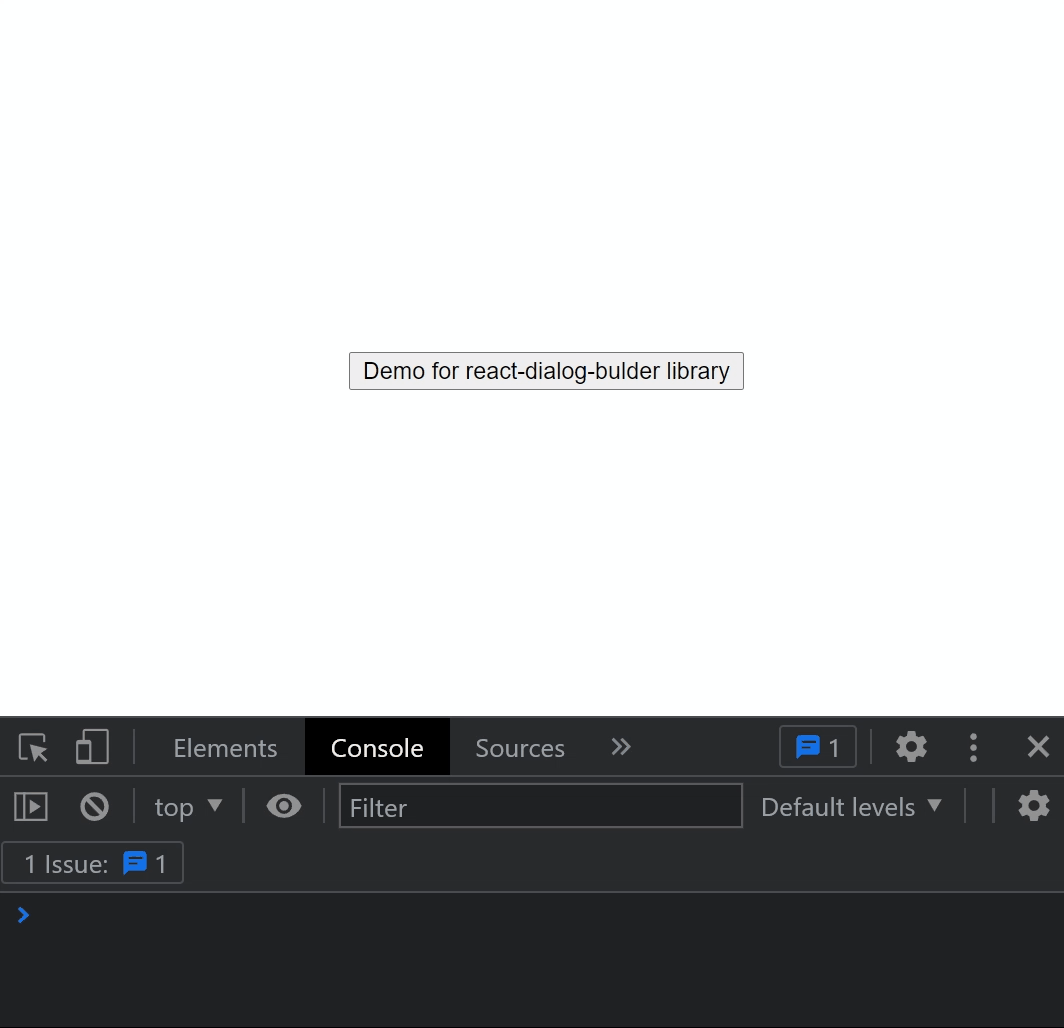
Security News
The Push to Ban Ransom Payments Is Gaining Momentum
Ransomware costs victims an estimated $30 billion per year and has gotten so out of control that global support for banning payments is gaining momentum.
react-dialog-builder
Advanced tools
Readme
This library allows programmatic creation of dialogs instead of using states which is often time a little inconvenient and results in quite a bit of boilerplate, its minimal, yet powerful API lets you render anything as a dialog, in additional to that, the CSS required for each created dialog is simple with no deeply nested selectors allowing you to easily style your dialogs anyway you want to fit your needs.
Why do you want to programmatically create dialogs? The short answer is simplicity, the long answer is because dialogs are on-demand components, you don't want them to appear inside your DOM tree until you need them which results in less bloated HTML, in additional to that, you don't have to create and maintain a new state to manage the dialog's life cycle (showing and closing the dialog)
npm i -S react-dialog-builder
import { DialogBuilder } from 'react-dialog-builder';
// This is necessary because this library relies on a few CSS rules
import 'react-dialog-builder/light.css';
// or import 'react-dialog-builder/dark.css';
class DialogBuilder {
/**
* The entry point to the `DialogBuilder` APIs
*
* @param content The component's JSX to render
* @returns A new dialog builder instance
*/
static newDialog(content: ReactNode): DialogBuilder;
/**
* Adds another class name for this dialog, newly added class names are
* concatenated instead of replacing previous ones.
*
* @param value The new class name to add
* @returns This dialog builder instance
*/
addClassName(value: string): DialogBuilder;
/**
* Sets whether this dialog can be closed by clicking on the backdrop, `false` by default
*
* @returns This dialog builder instance
*/
dismissible(): DialogBuilder;
/**
* Sets whether the backdrop should be transparent, `false` by default
*
* @returns This dialog builder instance
*/
transparentBackdrop(): DialogBuilder;
/**
* Opens the currently configured dialog, returns a dialog reference object that includes methods
* to close this dialog or to set a callback to be invoked after the dialog is closed
*
* @returns A {@link DialogRef} object
*/
open(): DialogRef;
}
/**
* Represents an object that contains a reference to the opened dialog which allows
* closing the dialog or setting a callback to be invoked after the dialog is closed
*/
interface DialogRef {
/**
* Manually close this dialog
*/
close(): void;
/**
* Sets the callback to be invoked after the dialog is closed.
*/
runAfterClosed(fn: () => void): void;
}
DialogBuilderDialogBuilder contains a single entry point via the static method called newDialog which returns a new DialogBuilder. It uses the fluent interface pattern to make the APIs more friendly to develop with.
import { DialogBuilder } from 'react-dialog-builder';
import 'react-dialog-builder/light.css';
function App() {
const openDialog = () => {
const dialogRef: DialogRef = DialogBuilder.newDialog(
<div style={{
display: 'flex',
flexFlow: 'column nowrap',
alignItems: 'flex-end',
backgroundColor: '#fff',
padding: '5px 20px 15px',
borderRadius: 4,
fontFamily: 'Helvetica Neue'
}}>
<p>Creating dialogs can never be easier</p>
<button
type='button'
style={{
marginTop: 10
}}
onClick={() => {
// Use the returned `DialogRef` object to close the dialog manually
dialogRef.close();
}}>
Close
</button>
</div>
)
// Calling this method will make clicking on the backdrop close this dialog
.dismissible()
// The final step in configuring this dialog which returns a `DialogRef`
// object allowing you to close this dialog instance or to set a callback to
// be invoked after the dialog is closed
.open();
// The returned `DialogRef` object contains a method to set a callback to be
// invoked right after the dialog is closed
dialogRef.runAfterClosed(() => console.info('Dialog was closed'));
};
return (
<button onClick={openDialog}>Demo for react-dialog-builder library</button>
);
}

FAQs
This library provides an easy and convenient programmatic approach to render anything as a dialog
We found that react-dialog-builder demonstrated a not healthy version release cadence and project activity because the last version was released a year ago. It has 1 open source maintainer collaborating on the project.
Did you know?

Socket for GitHub automatically highlights issues in each pull request and monitors the health of all your open source dependencies. Discover the contents of your packages and block harmful activity before you install or update your dependencies.

Security News
Ransomware costs victims an estimated $30 billion per year and has gotten so out of control that global support for banning payments is gaining momentum.

Application Security
New SEC disclosure rules aim to enforce timely cyber incident reporting, but fear of job loss and inadequate resources lead to significant underreporting.

Security News
The Python Software Foundation has secured a 5-year sponsorship from Fastly that supports PSF's activities and events, most notably the security and reliability of the Python Package Index (PyPI).